9.2 /10 1 Votes
4.5/5 Classic Retro Games Cabinet Upright CPU 6502 Initial release date August 1979 Developers Atari, Atari, Inc. | 9.3/10 Arcade Division Mode(s) Single player Arcade system Atari 6502 Vector Sound Discrete circuits Publishers Atari, Atari, Inc. | |||||||||||||||||||||||||||||||||
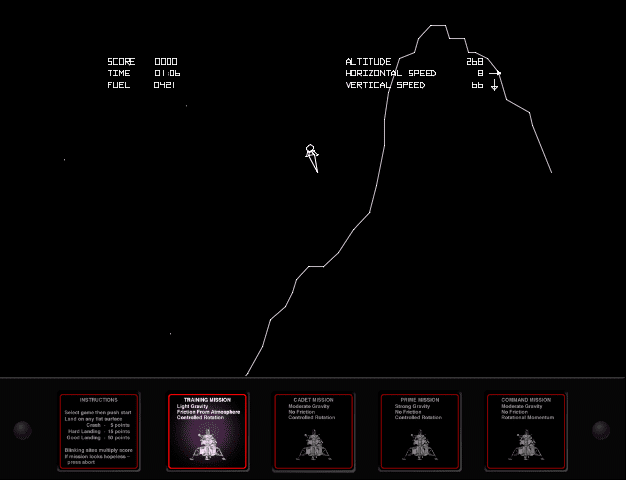 | ||||||||||||||||||||||||||||||||||
Display Horizontal orientation, vector monitor, size: 19 inch Similar Atari games, Simulation video games | ||||||||||||||||||||||||||||||||||
Lunar Lander is an arcade game released by Atari, Inc. in August 1979, which uses a vector monitor to display vector graphics. The game is a variant on the Lunar Lander concept, which dates back to 1969.
Contents
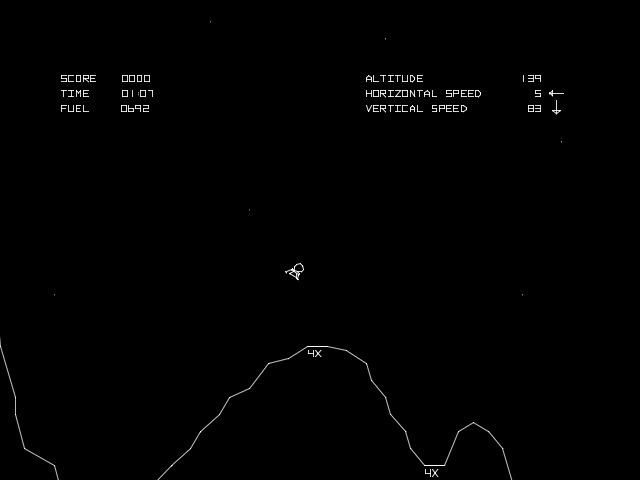
The object of the Lunar Lander game is to pilot a lunar landing module to a safe touchdown on the moon. Approximately 4,830 units were produced. The vector-graphics generator of the arcade game was the impetus for Atari's most successful coin-operated game, Asteroids.
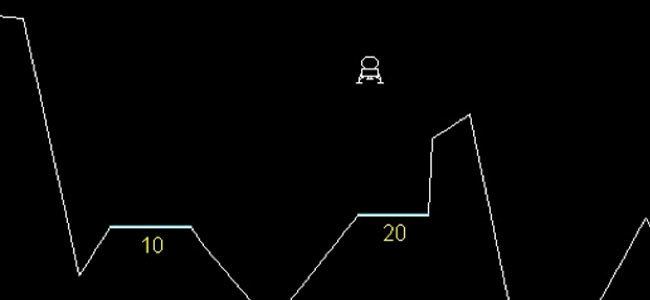
An Atari 8-bit family version of Lunar Lander was released by Adventure International in 1981.
Gameplay
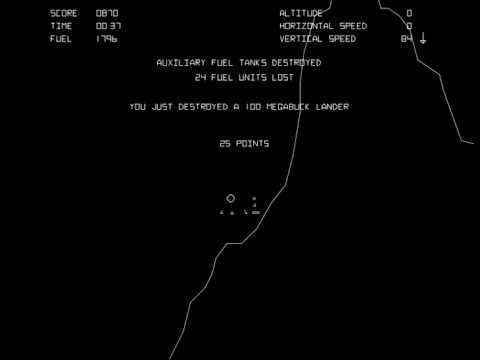
The objective of Lunar Lander is to pilot a lunar landing module as it prepares to touch down on the moon. The terrain is very jagged and has only a few flat areas appropriate for landing. These areas are highlighted with a flashing bonus multiplier, which is higher for smaller areas. If the player successfully lands the module, he or she is awarded points based on how good the landing was and the difficulty of the landing site. If he or she crashes, points are awarded based on the severity of the crash and sometimes the player receives a fuel penalty. In either case, the game starts another round with a different set of terrain and the player's remaining fuel. The game is over when the player has run out of fuel and crashes onto the moon's surface.
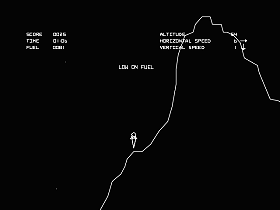
To pilot the lander, the player must counteract gravity by using the lander's aft thrusters to slow its descent. The player uses a proportional throttle to adjust the strength of the thrusters, a new feature at the time of the game's release. Three buttons provide the ability to rotate the craft clockwise and counterclockwise, and to "abort" an approach by firing the thrusters at full strength for a short time. Each action uses up the craft's limited fuel, and when fuel has run out, the lander stops responding to the player's actions. The player can optionally purchase more fuel at any time during the game by depositing additional coins, also a new feature for its time.
The player can adjust the game's difficulty at any time during play.
Clones
So many games based on the lunar landing concept exist, that in 1981 Electronic Games compared them to the many Space Invaders clones: "Sometimes it seems as though every company capable of copying a cassette is trying to sell a game on this theme."
